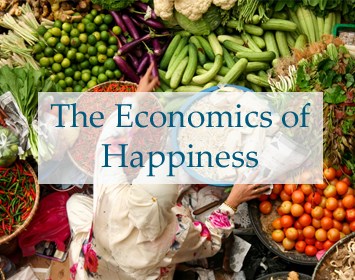Inauguration 2017 Special Coverage w/ Angela Davis, Naomi Klein, Ralph Nader & More
Menu

Special coverage in the Trump Era
From Public Citizen's Corporate Presidency site: "44 Trump administration officials have close ties to the Koch brothers and their network of political groups, particularly Vice President Mike Pence, White House Legislative Affairs Director Marc Short, EPA Administrator Scott Pruitt and White House budget director Mick Mulvaney."
Dark Money author Jane Mayer on The Dangers of President Pence, New Yorker, Oct. 23 issue on-line
Can Time Inc. Survive the Kochs? November 28, 2017 By Jane Mayer
..."This year, among the Kochs’ aims is to spend a projected four hundred million dollars in contributions from themselves and a small group of allied conservative donors they have assembled, to insure Republican victories in the 2018 midterm elections. Ordinarily, political reporters for Time magazine would chronicle this blatant attempt by the Kochs and their allies to buy political influence in the coming election cycle. Will they feel as free to do so now?"...
"Democracy in Chains: The Deep History of the Radical Right’s Stealth Plan for America" see: our site, and George Monbiot's essay on this key book by historian Nancy MacLean.
Full interview with The New Yorker’s Jane Mayer March 29, 2017, Democracy Now! about her article, "The Reclusive Hedge-Fund Tycoon Behind the Trump Presidency: How Robert Mercer Exploited America’s Populist Insurgency."
Democracy Now! Special Broadcast from the Women's March on Washington
The Economics of Happiness -- shorter version
Local Futures offers a free 19-minute abridged version of its award-winning documentary film The Economics of Happiness. It "brings us voices of hope of in a time of crisis." www.localfutures.org.
What's New?
July 06, 2011
Exxon's Yellowstone Oil Spill Shows Pipeline Risks
"The Houston-based oil giant reports that more than 280 personnel are now involved in cleaning up the spilled oil, which has contaminated farms and other properties along the scenic waterway.
The spill occurred when Exxon's Silvertip pipeline buried six feet below the river sprung a leak last Friday. Though the cause of the leak is not yet known, Eastern Montana got record rainfall last month, and some local officials have raised the possibility that the surging water exposed the pipeline, which in turn could have been damaged by debris.
But there have been problems along the Silvertip before. The U.S. Department of Transportation, which oversees oil pipelines, notified Exxon last July of seven potential safety violations on the Silvertip, with two of the warnings citing problems with the company's emergency response and pipeline corrosion training, CBS News reports. In May, the Silvertip was shut down due to concerns over rising waters, but Exxon restarted the line a day later after deciding the risk was low."
"The Yellowstone spill comes as the Obama administration is reviewing TransCanada's permit application for the proposed Keystone XL Pipeline that would carry Canadian oil sands crude to Gulf Coast refineries. Environmentalists have raised concerns about that project's impact on wildlife and water supplies. The pipeline would cross the Ogallala Aquifer, which supplies about 30 percent of the groundwater used for agricultural irrigation in the United States and provides drinking water to millions of residents of eight states including Texas."...
"The effort to open up new areas of the U.S. to offshore drilling is often promoted as an economic boon. However, a report [pdf] released last year by Environment North Carolina found that the value of the tourism and fishing industries is three times larger than the value of any oil and gas production in the Eastern Gulf, four times larger in the Mid-Atlantic states and 20 times larger in the South Atlantic."...
© Copyright 2011 by the Institute for Southern Studies
Published 6 July 2011 on Facing South, "A New Voice for a Changing South"
Author: Sue Sturgis

